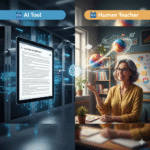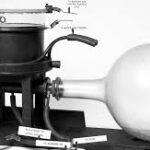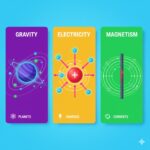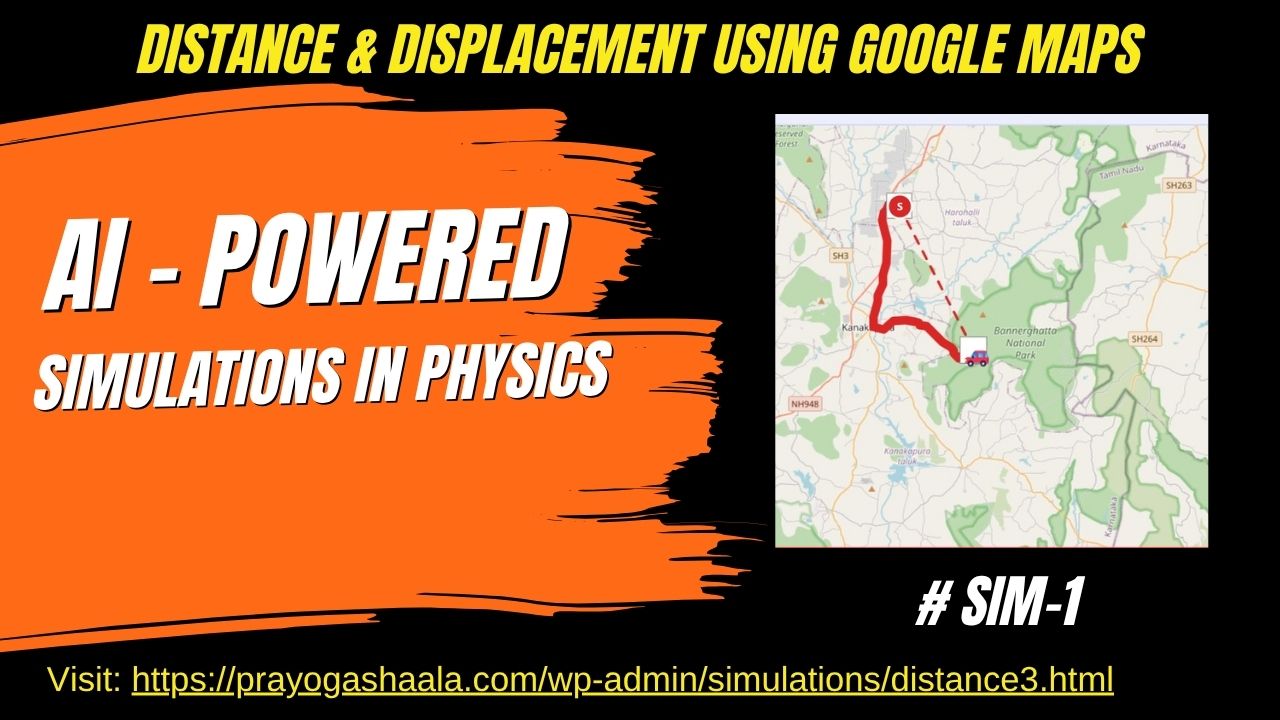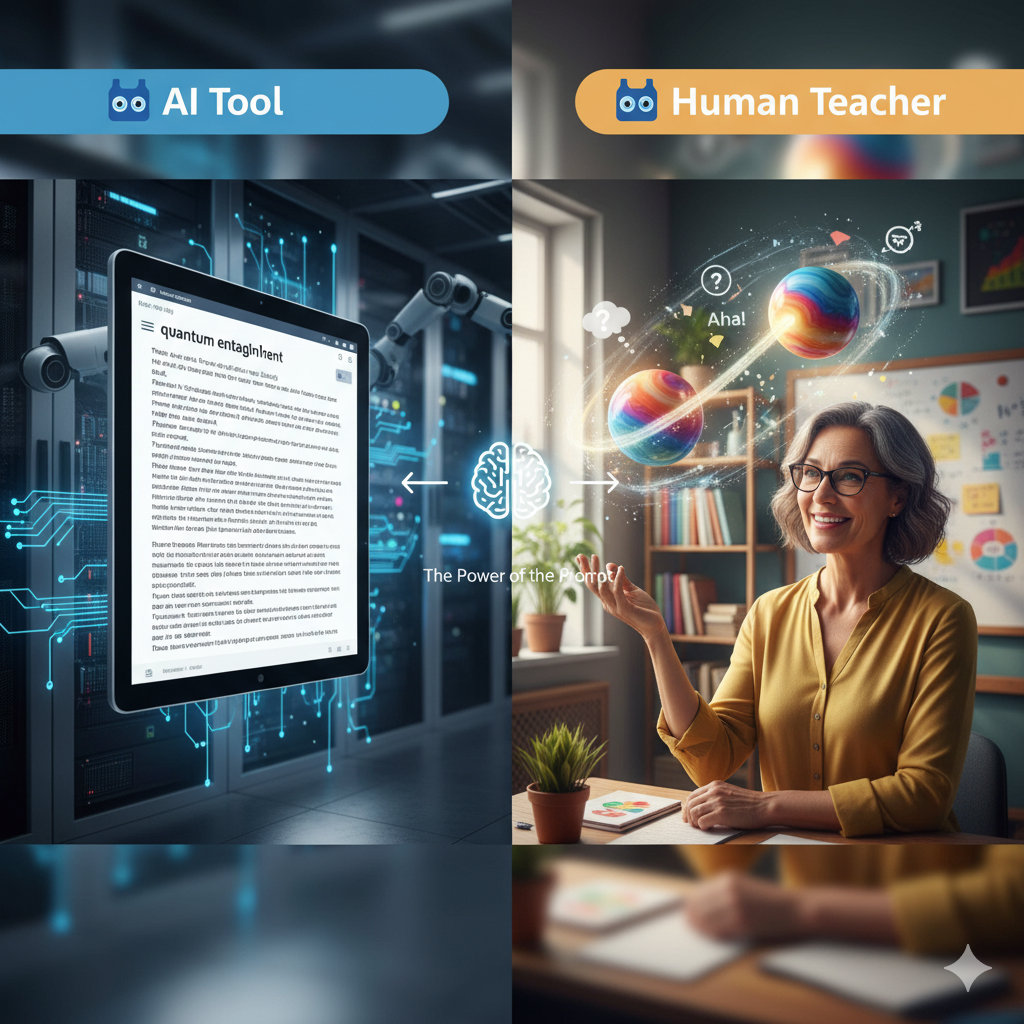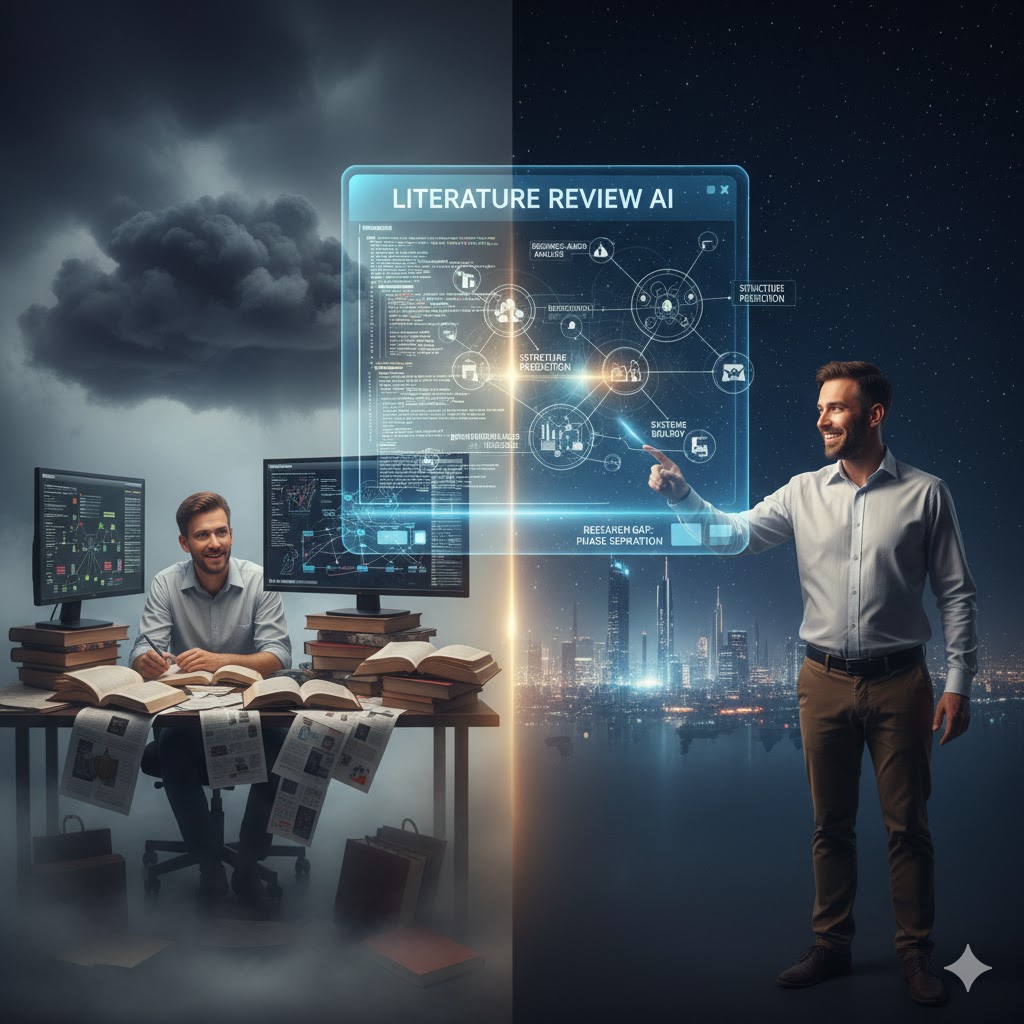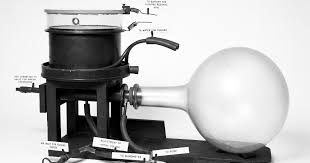The Fundamental Challenge with Conventional Teaching
Conventional approaches in teaching the difference between distance and displacement consistently fail to make students understand how the curvature of Earth fundamentally changes displacement calculations. When we draw straight lines on a blackboard, we’re essentially working in a flat, Euclidean space that bears little resemblance to the spherical geometry of our planet. This fundamental disconnect between classroom abstractions and real-world physics creates persistent misconceptions that follow students throughout their academic journey.
Simulations can revolutionize this understanding by providing authentic, interactive experiences where students witness the physics in action. The distance vs displacement simulation we’ve developed creates a powerful visual narrative—students can literally see a vehicle traversing the curved path of real roads while simultaneously observing the great-circle arc that represents true displacement on Earth’s surface.
Why Traditional Methods Fall Short
The Flat-Earth Fallacy in Physics Education
When we teach displacement using blackboard diagrams, we inadvertently perpetuate several misconceptions:
Straight-line assumption: Students visualize displacement as a simple Euclidean straight line
Scale blindness: Local examples don’t reveal the significance of Earth’s curvature
Static representation: No sense of how actual travel occurs versus theoretical displacement
Abstract mathematics: Haversine formulas remain meaningless without visual context
The Inquiry Process Limitation
Traditional teaching methods restrict student inquiry to:
Passive observation of teacher-drawn diagrams
Memorization of formulas without understanding
Limited exploration of real-world scenarios
Disconnected theory from practical applications
How Simulations Transform Understanding
Visual Learning Enhancement
The interactive simulation provides:
Real-time visualization: Students see the snake-like animation of actual route distance
Simultaneous comparison: The dashed red line shows true displacement alongside the route
Scale awareness: Working with actual GPS coordinates reveals Earth’s curvature effects
Dynamic interaction: Students can experiment with different locations and observe varying efficiencies
Inquiry-Driven Discovery
Simulations enable authentic scientific inquiry by allowing students to:
Formulate hypotheses: “I predict rural routes will be more efficient than urban ones”
Design experiments: Compare efficiencies across different terrains and distances
Collect real data: Generate actual measurements from GPS coordinates
Analyze patterns: Discover why some routes have 90% efficiency while others drop to 30%
Draw conclusions: Understand the relationship between geography and physics
The Physics Behind the Simulation
Haversine Formula: Earth’s Curved Reality
The simulation calculates true displacement using the Haversine formula:
A Screenshot of this simulation is as shown below. The simulation is available at : https://prayogashaala.com/wp-admin/simulations/distance3.html
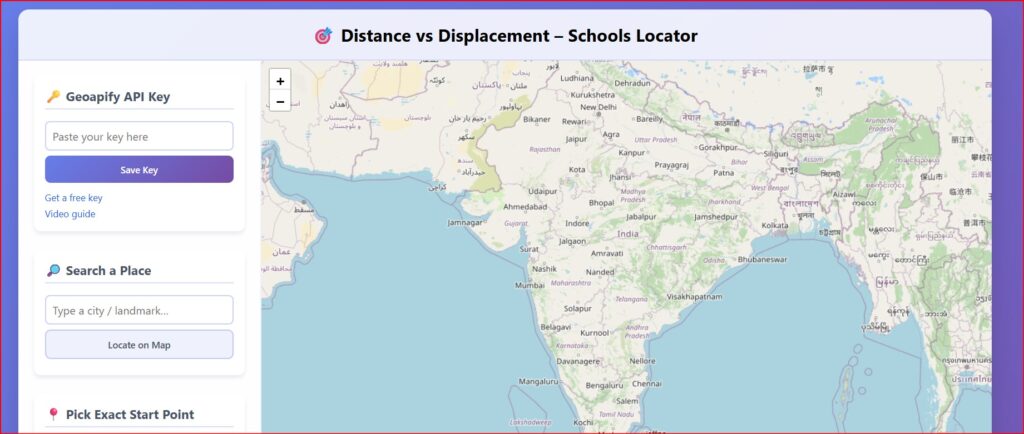
This formula accounts for Earth’s spherical geometry, something impossible to demonstrate on a flat blackboard. Students can now see how:
-
appear nearly straight
-
show significant curvature effects
-
demonstrate dramatic differences from flat-map assumptions
The efficiency calculation (η = |Δr|/d × 100%) becomes a powerful tool for understanding:
-
: Why displacement is always ≤ distance
-
: How mountains, rivers, and urban planning affect physics
-
: The eternal tension between theoretical minimums and practical realities
The simulation instantly reveals common student errors:
-
Students who think “shortest route” equals “shortest distance”
-
Those who assume displacement is always positive
-
Students who don’t grasp why efficiency can approach 100% but never exceed it
The interactive nature supports diverse learning styles:
-
: See the physics in colorful, animated form
-
: Click, drag, and interact with real maps
-
: Examine efficiency data and mathematical relationships
-
: Connect physics to everyday navigation experiences
The simulation generates authentic assessment opportunities:
-
Students can collect efficiency data across different regions
-
Compare theoretical calculations with real-world measurements
-
Design experiments testing factors that affect route efficiency
-
Create presentations analyzing their findings
Traditional approach: “Here’s the displacement formula, memorize it”
Simulation approach: “Why do you think this rural route has 85% efficiency while the city route only achieves 32%? Investigate and report your findings.”
Students can now tackle authentic questions:
-
How does terrain affect the relationship between distance and displacement?
-
Why do GPS systems sometimes suggest routes that seem longer?
-
How would a physicist approach optimizing transportation networks?
The simulation enables peer-to-peer learning:
-
Students can share interesting route discoveries
-
Compare findings across different geographical regions
-
Debate the physics behind unusual efficiency patterns
-
: Ask why GPS routes sometimes seem inefficient
-
Establish baseline understanding: Quick quiz on distance vs displacement
-
: What patterns might they discover?
-
: Start with local, familiar routes
-
: Encourage predictions before each trial
-
: Have students record efficiency patterns
-
: Share surprising findings with classmates
-
: What did the data reveal?
-
: How does this relate to vector physics?
-
: Design follow-up experiments
The distance vs displacement simulation represents more than just a teaching tool—it’s a paradigm shift toward inquiry-based, experiential learning. By grounding abstract physics concepts in real-world, interactive experiences, we transform passive recipients into active investigators.
When students can see the curvature of Earth affecting displacement calculations, interact with real GPS data, and discover efficiency patterns through their own exploration, physics becomes not just comprehensible but genuinely exciting.
The simulation doesn’t replace traditional teaching—it amplifies it, turning every physics concept into an opportunity for authentic discovery. As we move forward in physics education, tools like this will become essential for creating the next generation of scientifically literate, inquiry-driven learners.
The question isn’t whether we should use simulations in physics education—it’s how quickly we can integrate them into every physics classroom.
Click on the below video to see how to use the simulation
